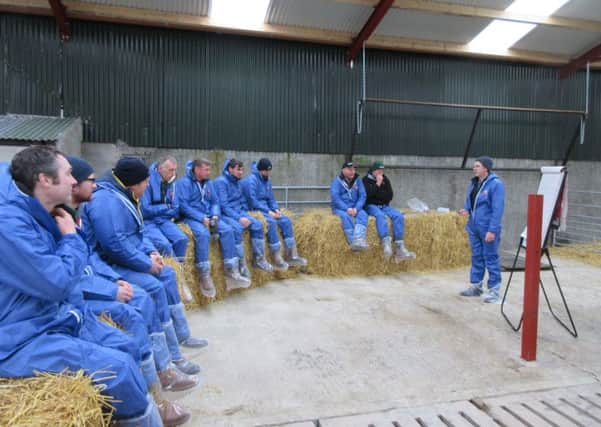More efficient fibredigestion an opportunity to boost margins


Dietary fibre is important both as an energy source and for correct rumen function, but it’s one of the slowest digesting fractions within the diet. Any improvements in fibre digestion can therefore significantly improve overall diet digestibility and the amount of milk produced from all feeds, not just forage.
Increasing fibre
digestibility
Until recently, the only practical way to increase fibre digestibility was to improve rumen function. This usually involved better ration formulation to balance energy supply in the rumen and minimise acidosis, plus the addition of a slow-release rumen conditioner like Acid Buf or Vistacell live yeast to help optimise rumen conditions for fibre-digesting microbes.
Advertisement
Hide AdAdvertisement
Hide AdHowever, research carried out by Agriculture and Agri-Food Canada (AgCanada) has shown that application of a fibre pre-treatment to total mixed rations (TMR) before feeding can further increase fibre digestibility. In fact, the same fat-corrected milk (FCM) yield was achieved with 2 kg/day less dry matter intake (DMI), an improvement in milk production efficiency of 11.3% (1.67 vs. 1.50 kg FCM/kg DMI).
The trial was carried out at the Lethbridge Research and Development Centre, Alberta, and used 60 early lactation Holsteins fed a silage-based TMR. Cows were either fed the control TMR with no pre-treatment, or the TMR following application of 1.0 ml/kg DM of a Trichoderma reesei-derived fungal extract (VistaPreT) applied before feeding.
Pre-treatment effects
The pre-treatment acts to roughen and create pits in the surface of the fibre in the ration, and so increase both the rate and extent of bacterial colonisation of that fibre once in the rumen. This reduces the lag time before fibre digestion begins by around one hour, and leads to improved overall digestibility of the ration, and greater energy supply to the cow.
The result is more production from the same feed, or – as in this case – the same production from less feed.